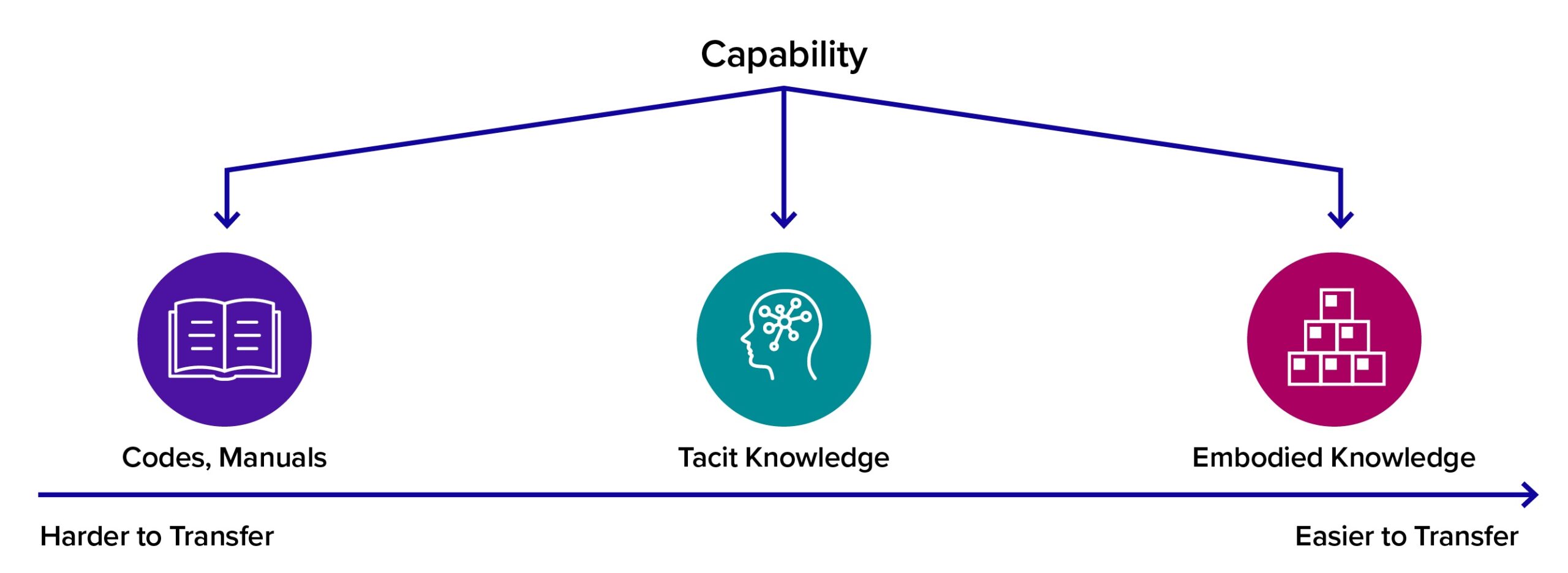Promoting Innovation Ecosystems in Antitrust: A Framework for Antitrust Analysis Applied to Emerging AI Technologies
June 27, 2024
By Ketan Ahuja
Introduction
Innovation is key to improving economic growth and people’s standard of living. Approaches to antitrust should therefore focus on mitigating harms to innovation, in addition to “static” welfare measures like prices. Yet while antitrust cases often mention innovation, litigators rarely center cases around it, and courts almost never intervene in the name of harms to innovation. This is in part because antitrust focuses on innovators’ incentives, guided by the (limited) understanding that innovation happens because firms work hard at solving problems. We’ll call this understanding the “Innovation-as-Incentives” paradigm.
Yet in practice, firms’ ability to innovate matters just as much as their incentive to innovate. Innovators’ ability to innovate comes from a supportive ecosystem that gives them access to different capabilities and technologies that they can combine to make new products and services. Innovation in this way often involves knowledge sharing across communities and organizations, transmitting knowhow through open access to products and services, movement of employees with specific knowledge, and collaboration rather than atomistic competition. We’ll call this understanding of innovation the “Innovation-as-Capabilities” paradigm.

“Approaching innovation issues solely as questions of maximizing incentives shapes the questions we ask, what we focus on, and ultimately the way we craft and apply antitrust remedies. Innovation is about incentives, but it is also about creating supportive ecosystems.”
Driving digital innovation is becoming critically important as the US vies with China for technological leadership in artificial intelligence capabilities and tries to ensure that the domestic benefits of AI are broadly shared. Innovation happens quickest when a wave of different start-ups experiment with different approaches, rather than when concentrated in monopolies. Antitrust policy can play an important role in building a strong AI ecosystem that supports many start-ups with the capabilities they need to innovate. The sector might otherwise be at risk of monopolization by a few Big Tech platforms that have managed to shape innovation ecosystems to serve them in other technology domains (Ezrachi & Stucke 2022). By opening up economic opportunity to more firms, giving more innovators the ability to innovate in AI will also help make the AI revolution fairer.
In practice, the Innovation-as-Incentives paradigm leads antitrust judges not to intervene in innovation cases, as judges focus on the need to protect companies’ rights to profit from their investments in innovation. By contrast, Innovation-as-Capabilities concerns suggest a policy geared toward sharing knowledge and critical resources and enabling collaboration. But these concerns are largely absent from antitrust law and debates on innovation.
Centering antitrust around innovation objectives demands that it supports the ability to innovate, not just the incentive, by helping innovators access required capabilities to make new products and services. This brief aims to provide practical guidance on how to bring these Innovation-as-Capabilities concerns into antitrust law, as a complement to a 2022 report, Innovating Antitrust Law, which originally introduced these innovation paradigms (Ahuja 2022). This brief illustrates how these ideas apply in practice, using examples of OpenAI and generative AI technologies.
A New Lexicon for Applying an Innovation-as-Capabilities Framework in Antitrust
The antitrust community needs a new lexicon to debate arguments based on the Innovation-as-Capabilities paradigm. We have a common language to speak about incentive-oriented topics, like market definition; horizontal, vertical, and conglomerate markets; and competitive abuses like cross-market leveraging. We need a similar lexicon for the Innovation-as-Capabilities approach, and what follows aims to provide a groundwork of key concepts. A full glossary of Innovation-as-Capabilities terms is included in Appendix 1.
Capability: The ability to do or make something that is economically valuable (i.e., applied knowledge that a firm can trade). Capabilities are easily transferred as knowledge embodied in products (it is easier to buy a component, product, or service than to learn how to produce it yourself) or by hiring workers and teams with knowledge of a certain domain (Balland et al. 2022). A capability could be contained in a firm, product, or team. Its importance arises because it is an ingredient, node, or resource within an ecosystem or production network, rather than itself an actor. An Innovation-as-Incentives approach, by contrast, focuses on incentives of firms as actors, competing within product markets.
Figure 2. Capabilities and Their Transmission

Suggested Citation
See Citation
Ahuja, Ketan. 2024. “Promoting Innovation Ecosystems in Antitrust: A Framework for Antitrust Analysis Applied to Emerging AI Technologies.” Roosevelt Institute, June 27, 2024.
